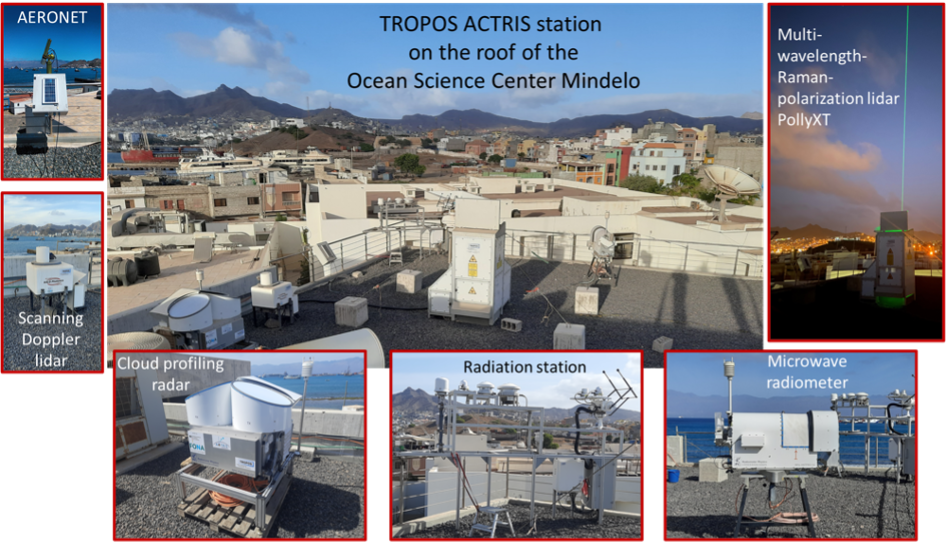CLARINET#
CLoud and Aerosol Remote sensing for EarThcare
Lead PIs: Dr. Annett Skupin and Dr. Holger Baars (Tropos)
Since 2021, TROPOS it operating a growing ACTRIS remote sensing facility at the Ocean Science Center Mindelo (OSCM). The station is part of TROPOS’ ACTRIS-D national facility CVAO (Cabo Verde Atmospheric Observatory) and part of ATMO ACCESS. So far, the station comprises a complete aerosol and cloud remote sensing set up:
A 15-channel multiwavelength Raman polarization lidar of type PollyXT (TROPOS development) for measuring aerosol, cloud and water vapour profiles. polly.tropos.de
An AERONET sun-sky-lunar photometer (CIMEL).
A RPG HATRPO G5 microwave radiometer
A cloud profiling radar
A HALO photonics streamline XR scanning Doppler lidar _ And a BSRN-like radiation station
In the framework of CLARINET, cloud radar observations will be extended to dual frequency by operating a MIRA 35 Ghz (Metek) and a RPG 94 Ghz cloud radar during August/September 2024. Furthermore, optimized and tailored operations and data analysis will be conducted to support the other ORCESTRA campaigns and to validate EarthCARE measurements. Additionally, the representativeness of the station in the context of regional heterogeneity of aerosols, clouds, and water vapor will be investigated. This will help contextualize the long-term observations planned for the next 25+ years at OSCM, as well as the intensive operations carried out during ORCESTRA in the summer of 2024.

Fig. 3 Cabo Verde Atmospheric Observatory at Mindelo#
Quicklooks via AERONET Lidar Cloudnet Single Instruments
References: OSCM | CVAO | ACTRIS | ATMOS ACCESS
Funding: The HALO Doppler lidar was funded by the German Federal Ministry of Education and Research (BMBF) via the PoLiCyTa/TROPOS-Dust project (grant no. 01LK1603A). ACTRIS-D is funded by the German Federal Ministry for Education and Research (BMBF) under grant agreements 01LK2001A-K & 01LK2002A-G.